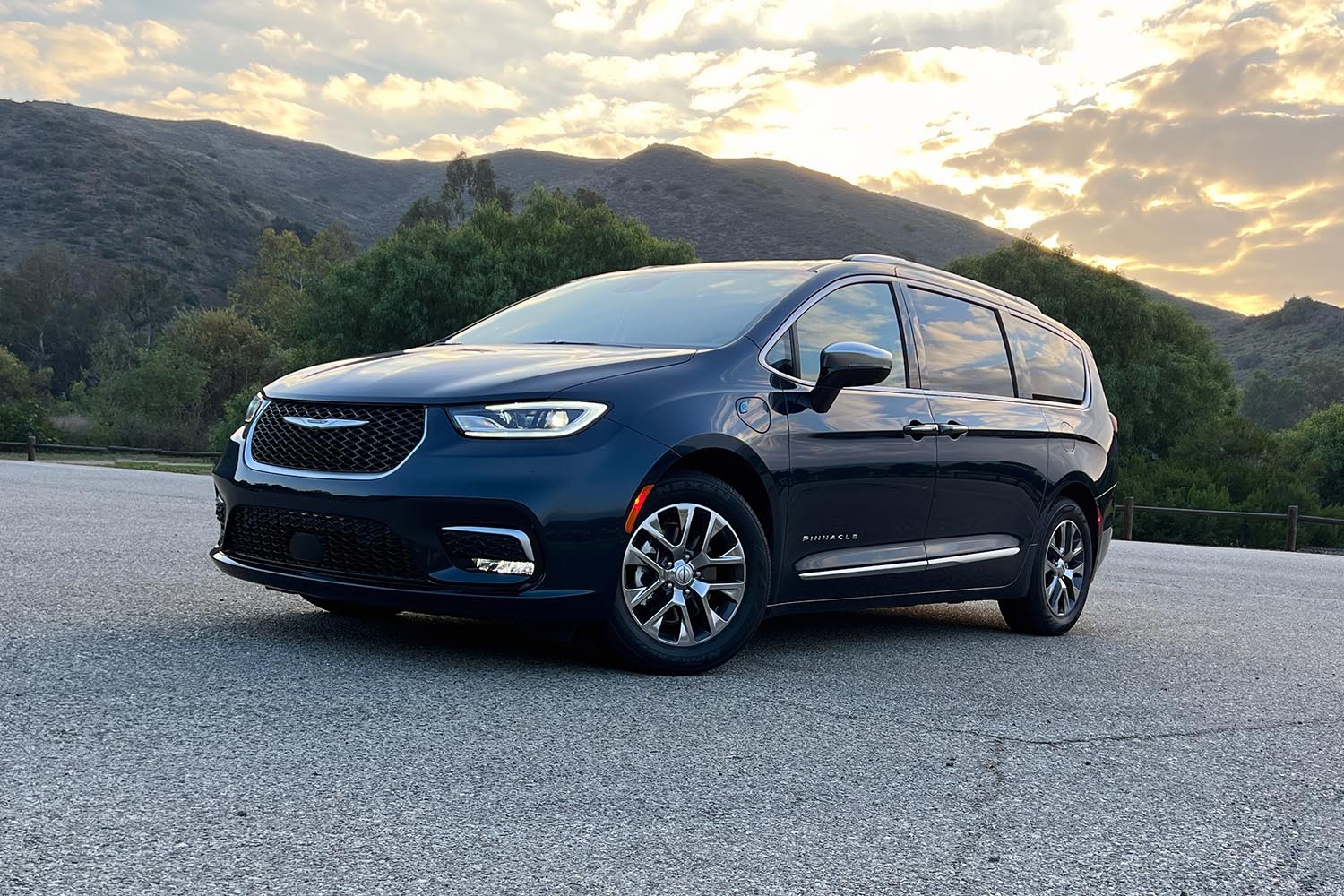The hybrid automotive world has evolved dramatically over the past two decades, transforming from experimental technology into mainstream transportation solutions. While hybrid vehicles promise improved fuel economy and reduced emissions, the reliability of their complex powertrains varies significantly across manufacturers and model lines.
Understanding which hybrid engines deliver exceptional longevity versus those plagued by frequent repairs can save consumers thousands in unexpected maintenance costs and frustrating downtime.
Modern hybrid systems combine traditional internal combustion engines with electric motors, battery packs, and sophisticated control systems. This complexity introduces multiple potential failure points that don’t exist in conventional vehicles.
However, when properly engineered and manufactured, hybrid powertrains can prove more reliable than traditional engines due to reduced operating stress and advanced monitoring systems.
The most reliable hybrid engines typically share common characteristics: proven gasoline engine foundations, conservative tuning that prioritizes longevity over peak performance, robust battery thermal management systems, and mature control software refined through multiple generations.
These powertrains often accumulate hundreds of thousands of miles with minimal major repairs, making them excellent long-term investments for cost-conscious consumers seeking environmental benefits without sacrificing dependability.
These engines may deliver impressive initial performance and efficiency, but develop expensive problems as they accumulate miles, ultimately costing owners far more than anticipated in repairs and reduced resale values.
5 Hybrid Engines That Last Forever
These exceptionally engineered hybrid powertrains deliver extraordinary longevity through proven battery technology, robust electric motors, and conservative system integration that enables decades of reliable operation while maintaining excellent fuel economy and environmental performance.
Their solid construction incorporates time-tested nickel-metal hydride batteries, durable electric drive components, and well-calibrated power management systems that resist degradation while providing seamless transitions between electric and gasoline power throughout hundreds of thousands of miles.
They represent hybrid technology at its most dependable, delivering efficient transportation that proves hybrid reliability through decades of trouble-free operation and minimal repair requirements that make hybrid ownership genuinely practical and cost-effective.
1. Toyota Prius Hybrid Powertrain (2004-Present)
The Toyota Prius hybrid system stands as the gold standard for hybrid reliability, with over two decades of continuous refinement creating one of the most dependable powertrains ever produced.
The current generation maintains Toyota’s commitment to conservative engineering while incorporating modern efficiency improvements that enhance both performance and longevity. Millions of Prius vehicles have demonstrated exceptional durability, with many examples exceeding 300,000 miles on original major components.
The foundation of Prius’ reliability lies in its Atkinson-cycle gasoline engine, specifically designed for hybrid operation rather than adapted from conventional applications. This engine operates under reduced stress thanks to the electric motor assistance, allowing Toyota to optimize internal components for maximum longevity rather than peak power output.
The engine rarely operates at high RPM or under maximum load, significantly extending component life compared to conventional powertrains that must handle all acceleration demands independently.
Battery system reliability has been thoroughly proven across multiple generations and millions of vehicles. The nickel-metal hydride battery pack used in most Prius models exhibits remarkable longevity, with many original batteries still functioning effectively after more than 15 years of service.
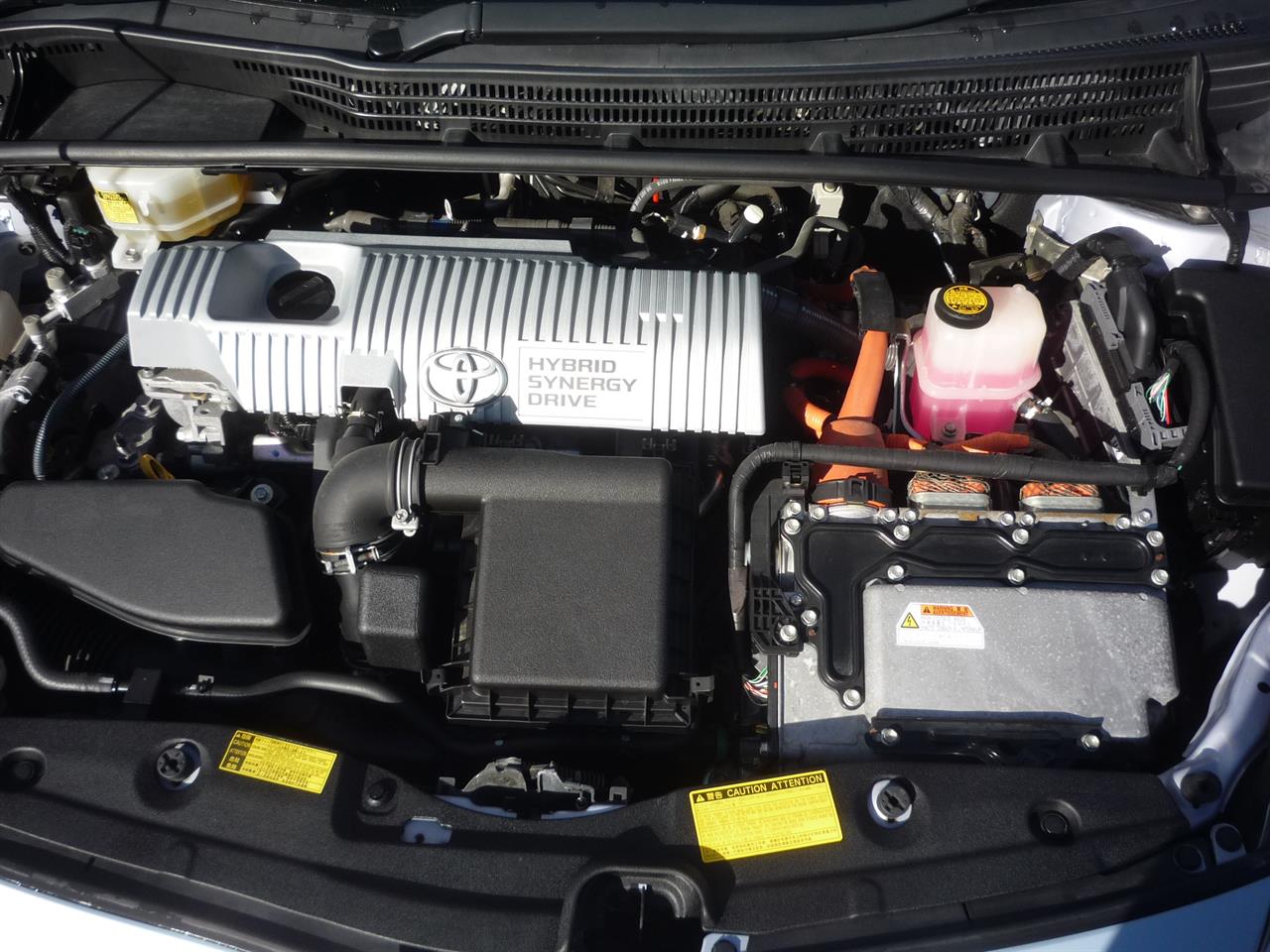
Toyota’s conservative battery management system prevents deep discharge cycles and maintains optimal operating temperatures, preserving battery chemistry integrity over extended periods. Even when replacement becomes necessary, aftermarket options have made battery service affordable and accessible.
The Prius’s electronic continuously variable transmission (eCVT) represents a masterpiece of hybrid engineering simplicity. Unlike conventional CVTs that rely on belts and pulleys, the eCVT uses planetary gears and electric motors to provide infinite gear ratios without physical friction components that typically wear out.
This design eliminates many traditional transmission failure modes, with most eCVT systems operating smoothly even after hundreds of thousands of miles with minimal maintenance beyond periodic fluid changes.
Power electronics and motor reliability have consistently exceeded expectations throughout the Prius’s production history. The inverter, motor controllers, and electric motors themselves rarely require major service, with most failures involving easily replaceable sensors or minor electronic components.
Toyota’s conservative approach to power electronics design prioritizes long-term reliability over maximum efficiency, resulting in systems that maintain their performance characteristics well beyond typical vehicle lifespans.
2. Honda Accord Hybrid System (2014-Present)
Honda’s two-motor hybrid system, featured prominently in the Accord Hybrid, represents one of the most innovative and reliable hybrid architectures available today.
This system’s unique approach to hybrid operation combines the efficiency of series hybrid operation with the performance of parallel hybrid systems, creating a powertrain that delivers both impressive fuel economy and exceptional longevity.
The system’s mechanical simplicity and robust engineering have proven themselves across multiple model years and hundreds of thousands of real-world miles.
The Accord Hybrid’s naturally aspirated 2.0-liter Atkinson-cycle engine serves as the foundation for the system’s reliability. This engine operates primarily as a generator at lower speeds, running at optimal efficiency points that minimize wear and maximize fuel economy.
During highway cruising, the engine can directly drive the wheels through a single-speed connection, eliminating the complexity and potential failure points of traditional multi-speed transmissions. This dual operating mode reduces stress on all powertrain components while maintaining excellent performance across all driving conditions.
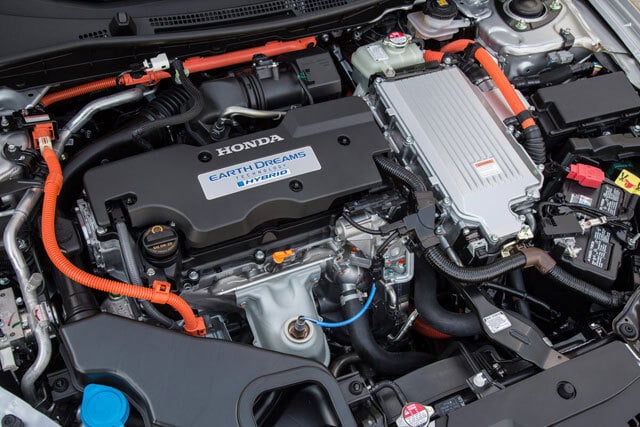
Battery reliability in the Accord Hybrid has been exceptional, with Honda’s lithium-ion battery pack demonstrating excellent longevity and minimal degradation over time.
The battery pack’s compact design and sophisticated thermal management system maintain optimal operating temperatures even under extreme conditions.
Honda’s conservative battery management strategy prevents stress-inducing charging and discharging cycles, preserving battery chemistry and extending operational life significantly beyond typical automotive battery expectations.
The dual-motor setup provides redundancy and reliability advantages over single-motor systems. Each motor serves specific functions, one primarily for generation and one for propulsion, allowing Honda to optimize each unit for its intended purpose rather than compromising on a single motor design.
This specialization results in motors that operate within their optimal efficiency ranges, reducing wear and extending service life while maintaining peak performance characteristics throughout the vehicle’s operational lifetime.
Control system sophistication represents another Accord Hybrid strength, with Honda’s Intelligent Multi-Mode Drive (i-MMD) system seamlessly managing transitions between operating modes without driver intervention.
The system’s advanced algorithms continuously optimize powertrain operation for maximum efficiency and minimal component stress. Software reliability has been excellent, with periodic updates addressing minor issues while maintaining the core system’s proven architecture and operational characteristics.
3. Toyota Camry Hybrid Powertrain (2007-Present)
The 2025 Honda Accord Hybrid, 2025 Toyota Camry, and 2025 Toyota Prius are the highest-rated models on KBB.com’s list of best hybrid cars, with the Camry achieving 53/50 mpg city/highway in its most efficient configuration.
The Camry Hybrid represents Toyota’s successful application of proven Prius technology to a more conventional sedan platform, creating a hybrid system that combines mainstream appeal with exceptional reliability. Multiple generations have demonstrated consistent durability while delivering impressive fuel economy in a practical family sedan package.
The Camry Hybrid’s 2.5-liter Dynamic Force engine exemplifies Toyota’s commitment to hybrid-specific engineering. This Atkinson-cycle powerplant incorporates advanced technologies, including direct and port fuel injection, variable valve timing, and optimized combustion chamber design specifically for hybrid operation.
The engine’s conservative tuning prioritizes efficiency and longevity over maximum power output, resulting in reduced stress on internal components and extended service intervals that minimize long-term ownership costs.
Toyota’s Hybrid Synergy Drive system in the Camry has benefited from decades of real-world experience and continuous refinement. The system seamlessly blends gasoline engine and electric motor power while managing energy recovery through regenerative braking.
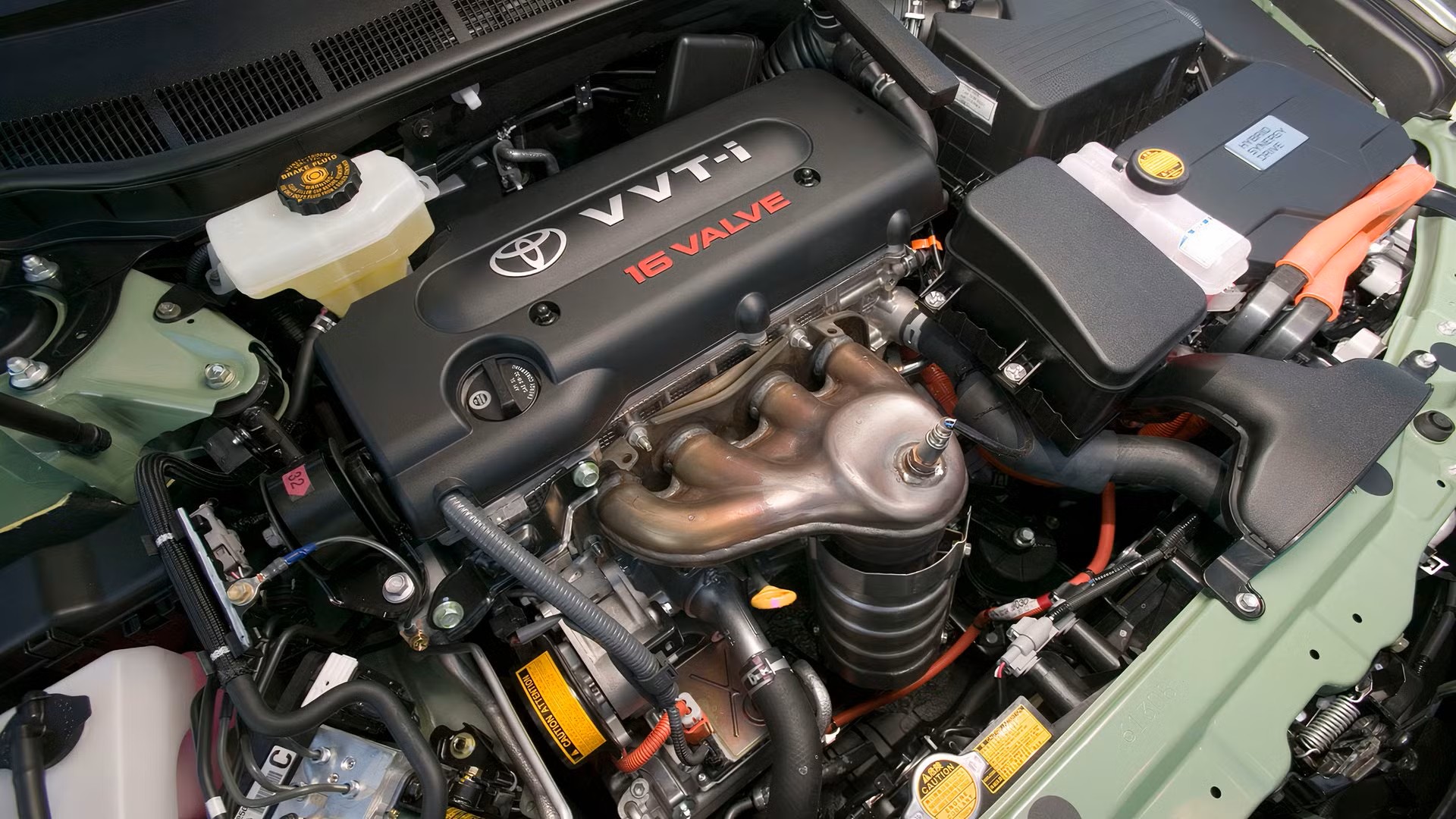
This sophisticated power management reduces wear on conventional braking components while optimizing fuel consumption and minimizing powertrain stress across all operating conditions. The result is a hybrid system that often exceeds conventional powertrain longevity expectations.
The nickel-metal hydride battery pack used in most Camry Hybrid models has demonstrated exceptional longevity across multiple climate zones and driving patterns.
Toyota’s conservative battery management prevents damaging deep discharge cycles while maintaining optimal operating temperatures through sophisticated thermal management systems.
Even in extreme climates, original battery packs frequently exceed 200,000 miles of service while maintaining adequate capacity for hybrid operation, with replacement batteries readily available when needed.
Transmission reliability in the Camry Hybrid benefits from the inherent simplicity of Toyota’s electronic continuously variable transmission design. The eCVT eliminates traditional friction components like clutches, bands, and torque converters that typically require service in conventional transmissions.
Maintenance requirements are minimal, with periodic fluid changes representing the primary service need. The system’s mechanical simplicity translates directly into enhanced reliability and reduced long-term maintenance costs for owners.
4. Honda Civic Hybrid System
The Honda Civic Hybrid, with a starting price of $28,750, offers an excellent entry into the hybrid vehicle. Known for its reliability and efficiency, the Civic Hybrid pairs a 1.5-liter four-cylinder engine with dual electric motors, delivering a combined 200 horsepower.
This newest addition to Honda’s hybrid lineup applies proven two-motor hybrid technology to the compact car segment, creating an exceptionally reliable and efficient powertrain that builds upon Honda’s extensive hybrid experience.
The Civic Hybrid’s 1.5-liter naturally aspirated engine represents Honda’s commitment to simplicity and reliability in hybrid applications. Unlike turbocharged engines that introduce additional complexity and potential failure points, this naturally aspirated powerplant operates under reduced stress thanks to electric motor assistance.
The engine’s conservative tuning and hybrid-specific calibration prioritize longevity and efficiency over peak performance, resulting in reduced wear rates and extended service intervals that benefit long-term reliability.
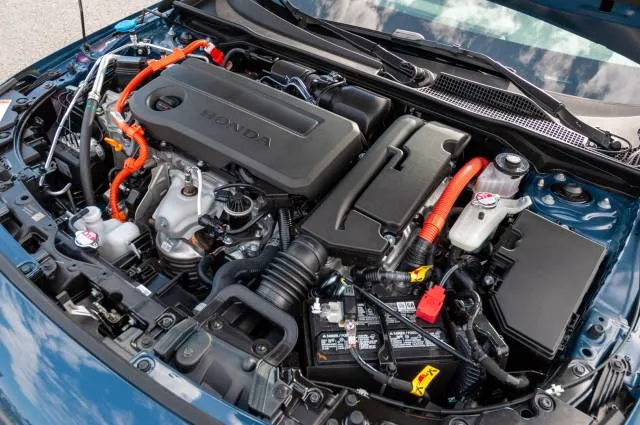
Honda’s Intelligent Multi-Mode Drive (i-MMD) system in the Civic represents the latest evolution of proven hybrid technology. The system’s two-motor configuration allows for optimal power distribution between electric and gasoline propulsion while maintaining mechanical simplicity.
The primary traction motor handles most acceleration duties, while the smaller motor serves as both generator and starter. This division of labor allows each component to operate within its optimal efficiency range, reducing stress and extending operational life.
Battery technology in the Civic Hybrid benefits from Honda’s extensive experience with lithium-ion battery systems. The compact battery pack incorporates advanced thermal management and sophisticated battery management systems that prevent damaging charging and discharging cycles.
Honda’s conservative approach to battery utilization maintains capacity over extended periods while ensuring reliable operation across various climate conditions. The battery pack’s placement and cooling system design protect against environmental damage while maintaining optimal operating temperatures.
The integration of hybrid components represents a particular Civic Hybrid strength, with Honda’s mature control systems managing seamless transitions between operating modes.
The system’s advanced algorithms continuously optimize powertrain operation for maximum efficiency while minimizing component stress. Software reliability has been exceptional in Honda’s hybrid systems, with robust programming and comprehensive error handling preventing the system malfunctions that plague some competitive hybrid architectures.
Also Read: 5 Fords That Rarely Blow Transmissions vs 5 That Slip at 60K
5. Toyota RAV4 Hybrid All-Wheel Drive System (2016-Present)
Toyota’s RAV4 Hybrid represents the successful application of proven hybrid technology to the compact SUV segment, creating a powertrain that combines exceptional reliability with practical all-wheel-drive capability.
The system’s unique approach to AWD operation eliminates traditional mechanical complexity while providing superior traction and weather capability. Multiple generations have demonstrated consistent durability while delivering impressive fuel economy in a practical SUV package that appeals to families seeking both efficiency and capability.
The RAV4 Hybrid’s 2.5-liter Dynamic Force engine serves as the foundation for the system’s exceptional reliability. This naturally aspirated powerplant incorporates advanced technologies specifically optimized for hybrid operation, including variable valve timing, direct injection, and high compression ratio design.
The engine’s conservative tuning prioritizes efficiency and longevity, with electric motor assistance reducing stress during acceleration and hill climbing. This reduced stress extends component life significantly compared to conventional SUV powertrains.
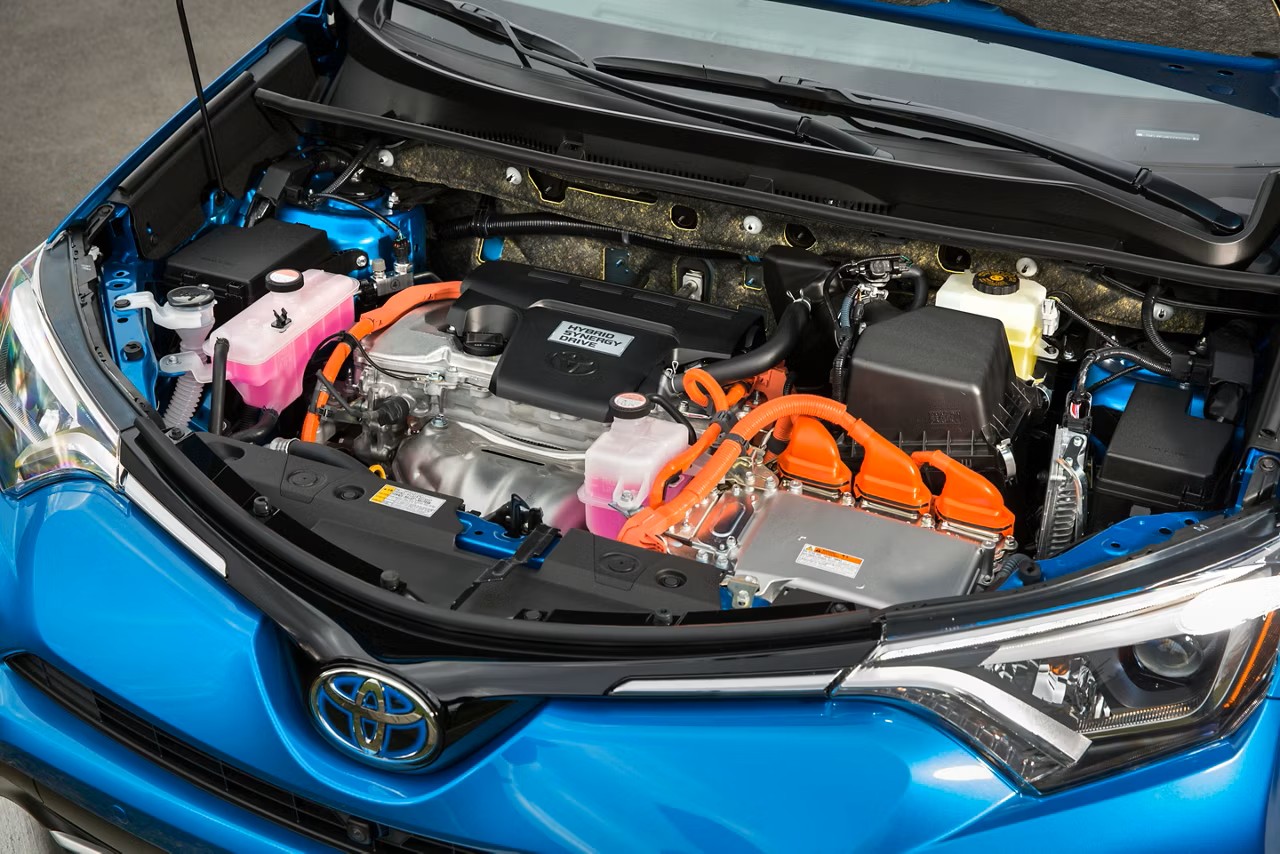
Toyota’s electronic all-wheel-drive system represents a revolutionary approach to AWD reliability. Instead of traditional transfer cases, differentials, and driveshafts that require regular maintenance and eventually wear out, the RAV4 Hybrid uses a separate electric motor to drive the rear wheels.
This eliminates mechanical complexity while providing instant torque distribution and superior traction control. The rear electric motor operates independently of the front hybrid system, creating redundancy that enhances both reliability and capability.
Battery system reliability in the RAV4 Hybrid has been exceptional across multiple model years and diverse operating conditions. The nickel-metal hydride battery pack maintains its capacity and performance even under the demanding conditions typical of SUV operation.
Toyota’s sophisticated battery thermal management system maintains optimal temperatures during towing, off-road driving, and extreme weather conditions. The battery pack’s robust construction and conservative management strategy ensure reliable operation well beyond typical vehicle replacement intervals.
The RAV4 Hybrid’s power management system seamlessly coordinates between the front hybrid system and rear electric motor to optimize traction, efficiency, and component longevity.
Advanced torque vectoring capabilities distribute power where needed while preventing wheel slip that can damage drivetrains in conventional AWD systems. This intelligent power management reduces stress on all drivetrain components while enhancing vehicle capability and safety in challenging conditions.
5 Hybrids That Need Frequent Repairs
These problematic vehicles burden owners with recurring hybrid system failures, expensive battery replacements, and complex repair scenarios that contradict hybrid efficiency promises through premature component failures and inadequate system integration that transforms eco-friendly transportation into costly maintenance nightmares.
Their compromised hybrid systems incorporate fragile battery packs, problematic inverters, and unreliable power management that generate endless repair headaches despite hybrid positioning that suggests superior technology and reduced operating costs over conventional alternatives.
They represent everything wrong with rushed hybrid development, where environmental marketing masks fundamental reliability problems that transform efficient vehicles into expensive repair burdens requiring constant professional attention and component replacement.
1. Ford Escape Hybrid (2020-Present)
The Escape Hybrid ranks 25th in reliability out of 44 Ford models, with owners making 216 complaints over 8 model years. Ford hybrid engine problems caused recalls of about 125,000 vehicles due to engine compartment fire risks, highlighting significant reliability concerns that have plagued this hybrid system since its recent reintroduction.
The current Escape Hybrid represents Ford’s attempt to enter the compact hybrid SUV market, but execution problems have resulted in numerous issues that frustrate owners and damage the model’s reputation.
Engine reliability problems have been the Escape Hybrid’s most significant weakness, with the 2.5-liter Atkinson-cycle engine suffering from numerous manufacturing and design defects.
Coolant leaks from cracked engine blocks have been reported across multiple model years, often requiring complete engine replacement under warranty. The engine’s aluminum construction, while lightweight, has proven susceptible to thermal stress cracking that leads to catastrophic coolant loss and potential overheating damage.
These failures often occur with relatively low mileage, indicating fundamental design or manufacturing problems. The hybrid system integration has proven particularly problematic, with frequent failures of the power electronics and motor control systems.
Owners report sudden loss of hybrid power, erratic system behavior, and complete hybrid system shutdowns that leave vehicles operating on gasoline power only.
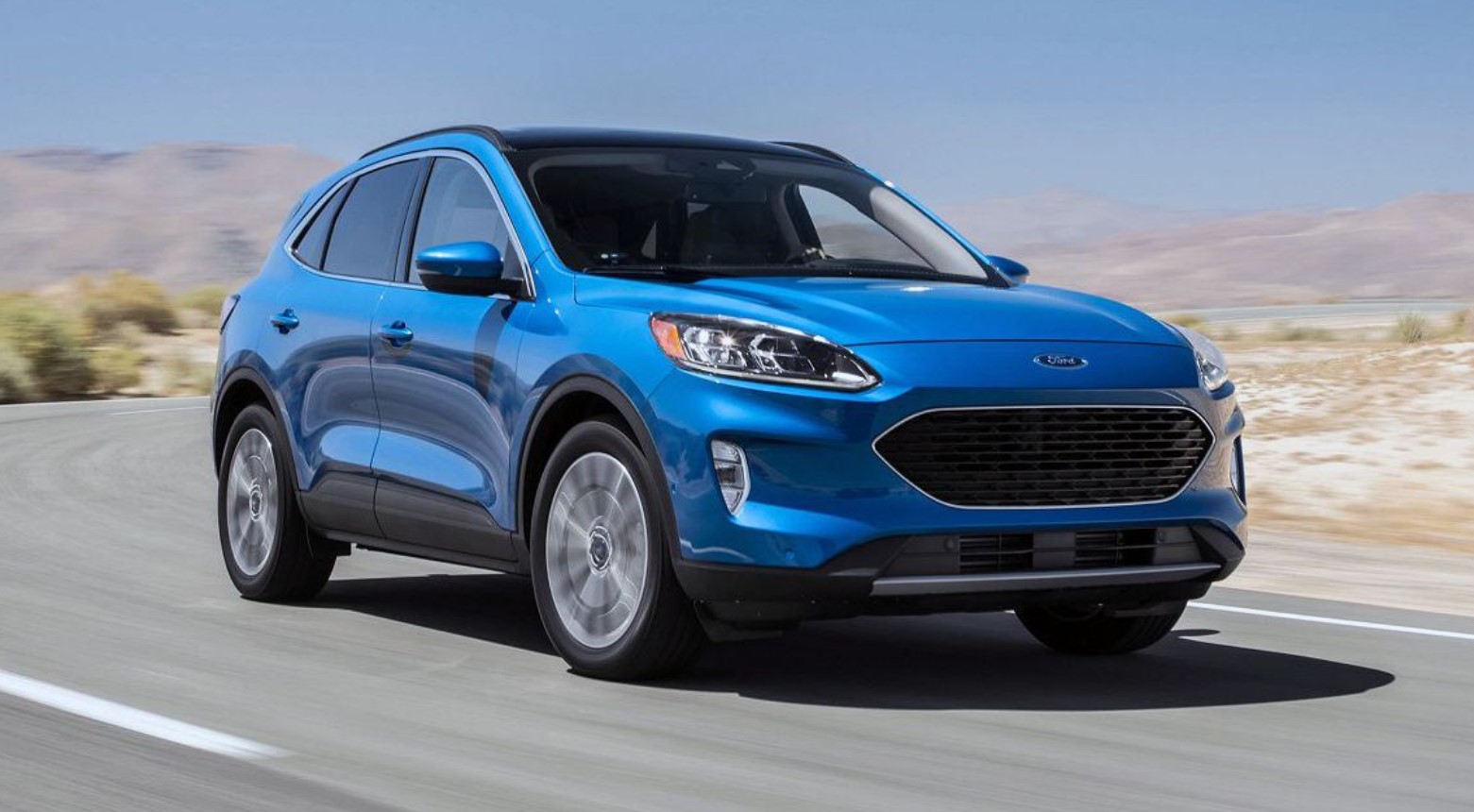
The regenerative braking system frequently malfunctions, causing inconsistent brake pedal feel and reduced braking effectiveness. These integration problems suggest inadequate development, testing, and poor coordination between hybrid system components.
Battery reliability has been another significant Escape Hybrid weakness, with premature battery pack failures reported across multiple model years. The lithium-ion battery pack has demonstrated poor thermal management capabilities, leading to overheating conditions that damage battery cells and reduce capacity.
Some owners report complete battery pack failures within the first 50,000 miles, requiring expensive replacements that often aren’t fully covered under warranty.
Software calibration issues cause unpredictable behavior that can be dangerous in traffic situations, with some vehicles experiencing sudden loss of power or unexpected acceleration events.
2. Jeep Wrangler 4xe Plug-In Hybrid (2021-Present)
The Jeep Wrangler 4xe represents an ambitious attempt to combine traditional off-road capability with modern hybrid technology, but the execution has been marred by numerous reliability issues that have disappointed owners expecting Jeep’s traditional durability.
The complex integration of hybrid systems with the Wrangler’s rugged construction has created numerous failure points that manifest as expensive repairs and extended downtime for owners who purchased the vehicle for its supposed reliability and capability.
Engine problems plague the Wrangler 4xe’s 2.0-liter turbocharged four-cylinder powerplant, which serves as the foundation for the hybrid system. Turbocharger failures are common, often occurring within the first 30,000 miles due to inadequate cooling and lubrication systems.
The engine’s high-pressure fuel system experiences frequent component failures, including fuel pump and injector problems that cause rough running and reduced power output. Carbon buildup on intake valves, common in direct-injection engines, occurs more rapidly in the 4xe due to the hybrid system’s start-stop operation patterns.
The plug-in hybrid system integration has proven particularly unreliable, with frequent failures of the electric motor, inverter, and charging systems.
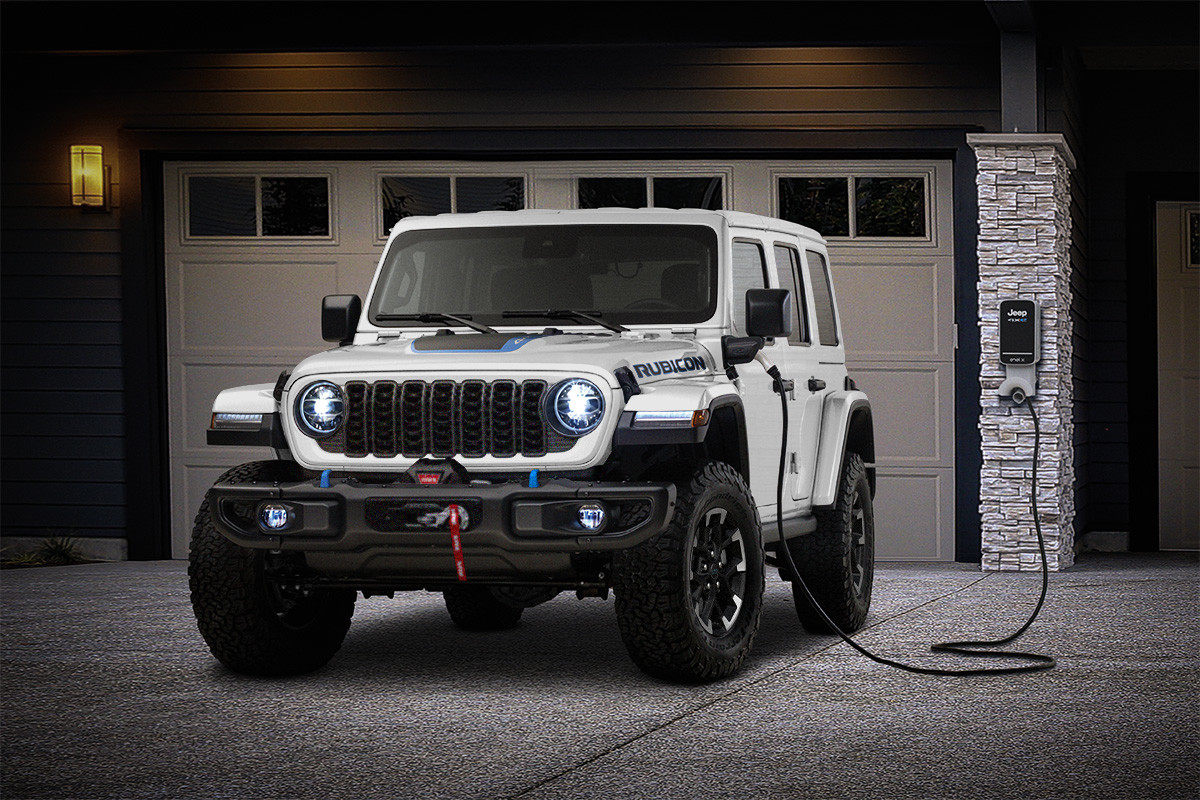
Owners report sudden loss of electric power during off-road driving, leaving them stranded in remote locations where the hybrid system’s complexity makes field repairs impossible.
Water ingress during deep water crossings, a traditional Jeep capability, frequently damages hybrid system components that weren’t adequately sealed for such conditions. These electrical problems often require complete system replacement rather than simple repairs, resulting in extensive downtime and enormous repair costs.
3. Hyundai Sonata Hybrid (2016-2019)
The Hyundai Sonata Hybrid’s reliability record has been significantly compromised by the same engine problems that have plagued non-hybrid Sonata models, combined with additional hybrid-specific issues that create a particularly unreliable powertrain combination.
The vehicle represents Hyundai’s attempt to compete in the midsize hybrid sedan market, but execution problems and inadequate quality control have resulted in numerous expensive failures that have damaged the model’s reputation and resale value.
Engine reliability problems dominate the Sonata Hybrid’s issue list, with the 2.0-liter naturally aspirated engine suffering from the same bearing and connecting rod failures that have affected millions of Hyundai vehicles.
The electric motor and power electronics frequently experience failures that require the expensive replacement of major components.
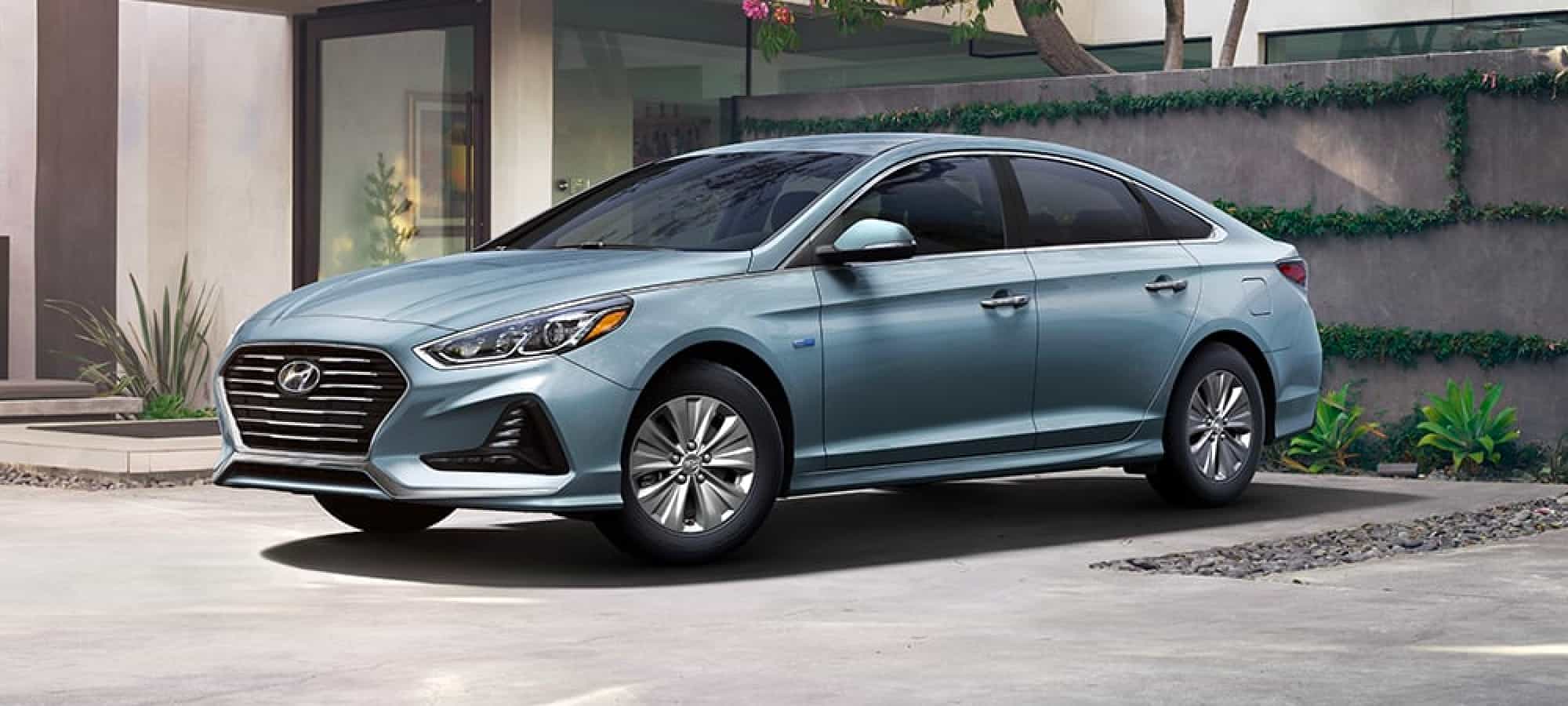
Integration between the gasoline engine and electric systems has proven problematic, with software glitches causing erratic hybrid operation and reduced fuel economy.
The regenerative braking system often malfunctions, causing inconsistent brake pedal feel and potentially dangerous braking performance variations.
Battery reliability has been inconsistent across model years, with some vehicles experiencing premature battery pack degradation that reduces electric driving capability and fuel economy.
Transmission problems plague both hybrid and non-hybrid Sonata models, but the hybrid system’s additional complexity makes repairs more difficult and expensive. The six-speed automatic transmission experiences frequent failures of internal components, harsh shifting, and complete loss of certain gear ranges.
The transmission’s integration with the hybrid system creates complex interactions that make accurate diagnosis challenging, often leading to multiple repair attempts and extended downtime while technicians struggle to identify root causes of intermittent problems.
4. Chrysler Pacifica Hybrid (2017-Present)
The Chrysler Pacifica Hybrid represents an ambitious attempt to electrify the minivan segment, but the execution has been hampered by numerous reliability issues that have frustrated families who purchased the vehicle for its innovative technology and practical capabilities.
The complex integration of plug-in hybrid systems with traditional minivan functionality has created multiple failure points that manifest as expensive repairs and extended periods of reduced capability when systems malfunction.
Engine problems affect the Pacifica Hybrid’s 3.6-liter V6 powerplant, which must operate in conjunction with the hybrid system’s electric motors and complex control systems.
The plug-in hybrid system itself has proven unreliable, with frequent failures of the electric motors, inverter systems, and charging infrastructure. Owners report sudden loss of electric power during family trips, leaving them stranded with limited gasoline-only range and reduced capability.
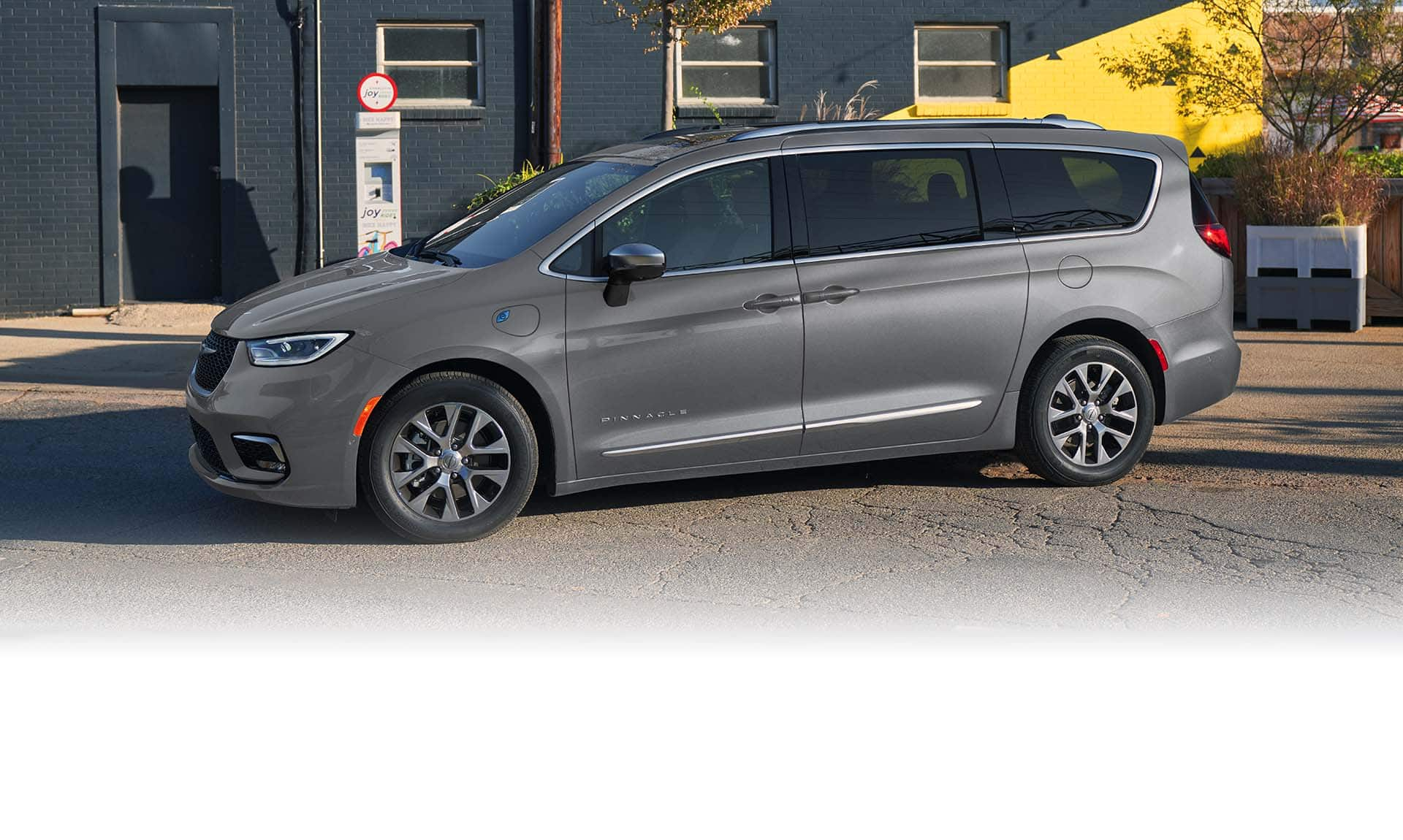
The dual-motor setup increases complexity while creating additional failure points that don’t exist in simpler hybrid architectures. Battery thermal management systems frequently malfunction, leading to reduced electric range and potential safety shutdowns during operation.
Battery reliability has been particularly problematic, with the large 16-kWh lithium-ion battery pack demonstrating poor longevity and frequent failures. The battery pack’s placement within the vehicle’s structure makes replacement expensive and time-consuming, often requiring extended dealership visits that leave families without transportation.
The infotainment system frequently crashes or becomes unresponsive, particularly when displaying hybrid system information. Climate control systems malfunction when operating on electric power, and various convenience features fail intermittently due to electrical system instability.
These problems are often intermittent and difficult to diagnose, leading to multiple repair attempts and customer frustration.
5. Lincoln Aviator Grand Touring Hybrid (2020-Present)
The Lincoln Aviator Grand Touring represents Ford’s attempt to bring plug-in hybrid technology to the luxury SUV segment, but the execution has been plagued by numerous reliability issues that have disappointed owners expecting both luxury refinement and dependable operation.
The vehicle’s complex systems integration and premium positioning make repairs particularly expensive, while the hybrid system’s problems compromise the driving experience that luxury buyers expect from their vehicles.
Engine reliability problems affect the Aviator’s twin-turbocharged 3.0-liter V6, which must coordinate with the hybrid system’s electric motor and complex control algorithms.
Turbocharger failures are common, often occurring within the first 40,000 miles due to the additional stress imposed by hybrid system integration. The engine’s high-pressure fuel system experiences frequent component failures, while carbon buildup problems are exacerbated by the hybrid system’s frequent start-stop cycles.
These problems often require extensive engine work that can exceed $10,000 in repair costs. The plug-in hybrid system integration has proven particularly unreliable, with frequent failures of the electric motor, power electronics, and charging systems.
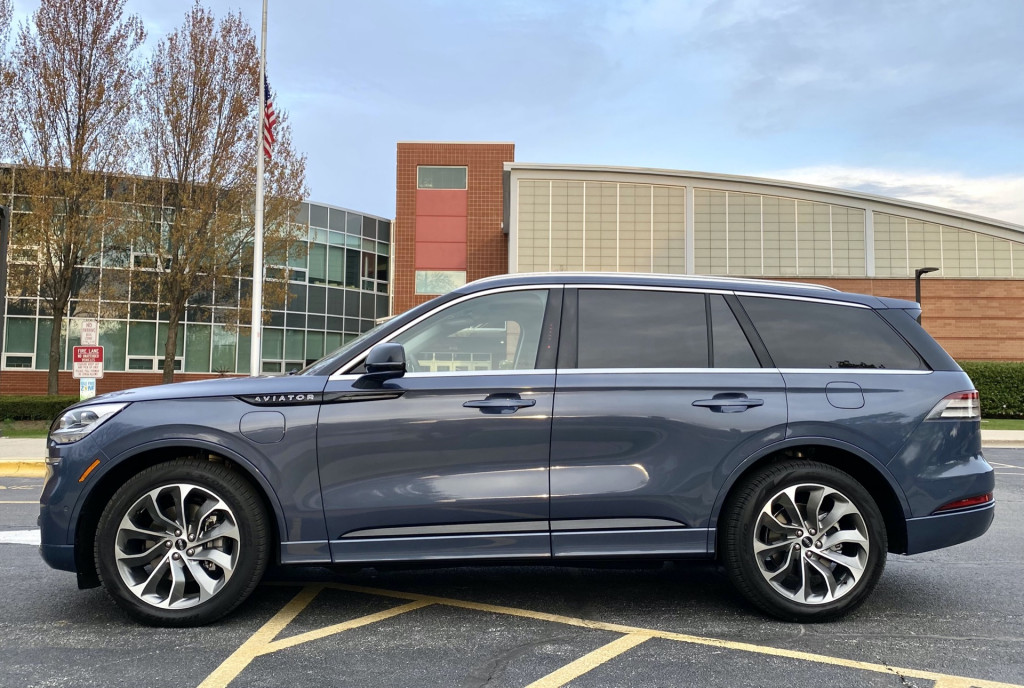
The system’s complexity overwhelms the vehicle’s electrical architecture, causing cascading failures that affect multiple systems simultaneously. Owners report sudden loss of hybrid power during highway driving, creating potentially dangerous situations when the vehicle unexpectedly loses significant power output.
The regenerative braking system frequently malfunctions, causing inconsistent brake pedal feel and reduced stopping capability. Battery system problems plague the Aviator’s 13.6-kWh lithium-ion battery pack, which demonstrates poor reliability and premature capacity degradation.
The advanced infotainment and driver assistance systems experience regular malfunctions that require software updates or component replacement. These luxury features, while impressive when functioning, create additional failure points that make the Aviator particularly expensive to maintain and repair compared to conventional luxury SUVs.
Also Read: 5 Mercedes With Durable Interiors vs 5 That Feel Cheap Fast

